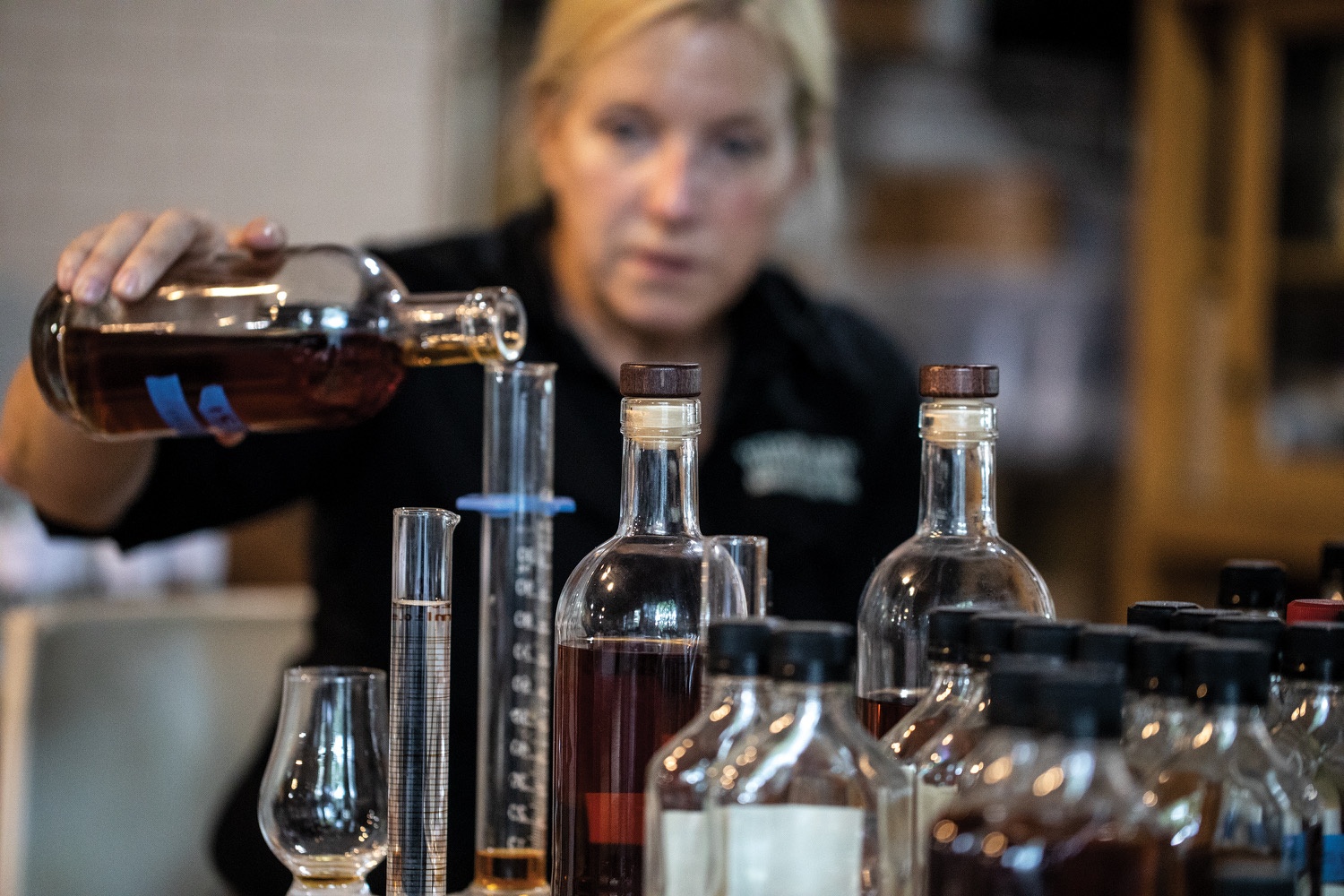Lisa Wicker has had a dynamic career in beverage alcohol. She grew up in Indiana and always seemed to have some science experiment bubbling in her grandmother’s sauerkraut crock. Little did she know she would eventually find her career path first in winemaking and later in whiskey making, leading her to become the President and Head Distiller at Widow Jane in Brooklyn after working in several Kentucky and Indiana distilleries.
BW: You started out as a winemaker. How did that experience shape your approach to distilling?
LW: Funny timing! I had a conversation with a well-known Master Distiller today and he said “you approach mash like a winemaker!” When I was learning to manage mash fermentations, when things were not going well, I fell back on winemaking troubleshooting to work through problems. I remember calling a winemaker, I did not know any grain distillers well at that point, and we worked through an issue or two! I still use approaches that are from my wine days — especially for cleaning! I think it helps when I am working with heirloom corn, not unlike grape varietals, they all need a little different approach and plan.
BW: What is the most surprising thing you have learned on your journey to your current position as President & Head Distiller at Widow Jane?
LW: You really can work your way up through the ranks. I started as a farmhand harvesting grapes and moved into winemaking, then moved on to distilling after several years. There are trade-offs, but everything in life worth having makes a mess. 😉
BW: We often talk about corn. Tell me about Baby Jane.
LW: Baby Jane is an open-pollinated cross of heirloom varietals Bloody Butcher and Wapsie Valley, trademarked to Widow Jane. Heirlooms are an opportunity to add even more dimension to a lovely mash bill. We all love yellow dent Bourbon, but these corn variations will expand what we already love about whiskey and all of the differences.
BW: What advice do you have for women who want to learn blending and distilling?
LW: Blending. Start with the “building blocks.” First, understand the ingredients and know what they taste like before they are cooked, after they are cooked, fermenting, and coming off of the still. When you nose a whiskey, your brain will go through what is “cataloged” and know where the flavors originated. Stick your nose in the barrels and throw some seasoned white oak on a fire. Taste through entire categories of food, for example, all the sugars…refined white, raw, light and dark brown, honey, maple syrup… this will give you the framework for “sweet” and give you the ability to be specific.
Distilling. Brew beer, make wine. Study why and how things work specifically (yeast, water, grapes, or grain) and establish a baseline for understanding. If someone wants to get into distilling and has the time, a food science or agricultural science degree would be a great fit in craft distilling. Build your own apprenticeship by working for a craft distillery and learn everything you can about sanitation and environment and terroir, the rest will present itself. Know that there are many paths. It is not unusual to hear a distiller say they started in the tasting room and raised their hand when production was short-staffed. Be patient, work hard, keep working hard…
BW: Tell me about your perfect whiskey weekend in Brooklyn.
LW: Friday afternoon staff tasting ( I wish every week but whiskey-making gets in the way,) followed by end of shift drinks in our bar at Widow Jane and home to recover from another week! Saturday, popping into one of the many small wine and liquor stores to shop when I am walking my errands. Grabbing a cocktail late afternoon while waiting on a table at Lucali’s, a neat pour nightcap of something new. Sunday afternoon, one of the neighborhood spots, for tacos and a whiskey. There are so many places to visit and so many wonderful memories here, it is hard to come up with one combination for a weekend! Cheers!

Photos Courtesy of Maggie Kimberl and Lisa Wicker


A fascinating read
Lisa’s insight is phenomenal. So much knowledge acquired in her life. I enjoyed this article.
What an inspiration!